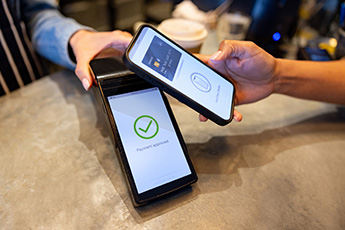Children all over the country are crying right now. That is because scientists say it is time to ban glitter. Apparently, while glitter is shiny and flashy, it also wreaks havoc on the environment. Scientists say glitter comes from bits of plastic polymer, which are all over the ocean polluting it, and glitter is a unique problem because fish mistake it for food. So, scientists say if we don't all want to eat pieces of plastic grocery bags, maybe it is time to rethink glitter too.
As with glitter, bank customers seem to always be interested in the next shiny thing too. That said, it seems mobile wallet adoption may not be one of those any longer.
Consider a study by JPMorgan Chase and Forrester Consulting of 1,500 US consumers. These consumers were all age 18 and over and go online at least weekly. The study also included 800 professionals who said they were responsible for their company's payment decisions.
According to the study, there has been little change in digital wallet adoption and acceptance rates by consumers and merchants since the last one back in Oct 2016.
Roll forward and only 14% of consumers polled in Jun 2017 said they prefer to pay with digital wallets vs. 15% who said this in Oct 2016. Meanwhile, 41% in the most recent study said they were likely to use a digital wallet in the next 12 months vs. 39% who said so back in 2016. Finally, only a slightly higher percentage of merchants said they now accept digital wallets at 37% vs. 36% in the earlier study.
Certainly, mobile wallet adoption is still in its early days, so we have to give it some slack. After all, despite the pause in adoption, the study found 41% of consumers said they were likely to try digital wallets in 2018.
To get a broader viewpoint, we also compare these studies with another one from Auriemma Consulting Group. They found that use of top mobile payment apps (Apple Pay, Samsung Pay and Android Pay) among eligible users declined from 30% at this time last year to 25% now.
The research suggests that it will still be several years before adoption takes off to a larger extent. This is likely occurring for multiple reasons.
Security concerns are an often-cited reason, but the Auriemma study suggests operational issues are also a barrier. A sizeable percentage of active mobile payments users say they have encountered problems at the register, so usage has declined. Notably, the study found 45% of in-store purchasers gave up trying to use mobile wallets and shifted to a physical card instead.
Another reason some users may be shying away from mobile wallet adoption is they are not taking the time to figure out how to use the technology. Some consumers may not recognize that merchants accept digital wallets, while others don't see a big enough difference from debit and credit cards to prod them into making a switch. This is according to findings from the JPMorgan Chase/Forrester study.
Even so, mobile wallet adoption is likely to gain broader acceptance over the longer term. This is because consumers continue to seek better security, the ability to order/pay ahead of time, and the ability to easily use coupons and rewards. The mobile wallet is a good fit for these. Merchants, meanwhile, are interested in a fast and efficient check-out experience, in a way that appeals to customers and addresses security concerns.
Community bankers should keep an eye on this, as some banks such as Barclays and Wells Fargo have started to roll out their own mobile wallets. While overall adoption at this point may be slow, it is critical to stay focused not only on what customers want now, but also on what they are likely to want in the future.
Customers will keep chasing shiny objects, so stay informed to best prepare.




